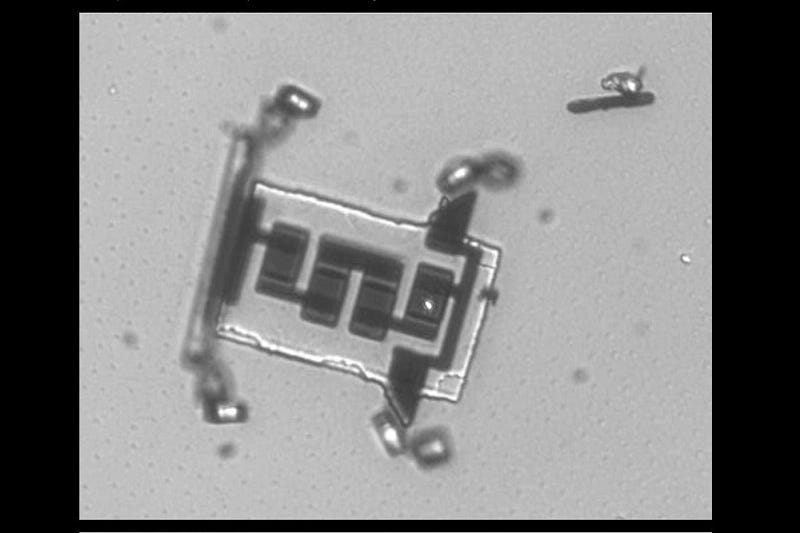Marc Miskin’s Micro-Robots are Small Enough to be Injected by Syringe

Marc Miskin, assistant professor in the Department of Electrical and Systems Engineering, has only been at Penn Engineering since January, but his work in micro-robotics is already making waves.

He presented research on his 70-micron-long robots, begun while a post-doctoral researcher at Cornell, at the American Physical Society March Meeting. Mass-produced from silicon wafers using microchip-manufacturing technique, each robot features legs made out of platinum and titanium, as well as a set of solar panels on its back. Laser light, shining through the first few layers of skin, provide them with power, though other sources will be considered for potential applications around the body.
The Philadelphia Inquirer’s Tom Avril reported on Miskin’s talk, where he explained the basic principles behind the robots’ ability to move, as well as his vision for where they might be used.
The robots are able to move because electricity has a different effect on the two kinds of metal in each leg. The platinum expands while the titanium remains rigid, causing the legs to bend. The front and back legs are alternately contracted or relaxed to generate the robot’s gait, Miskin said.
He said the research reminded him of his childhood, when he would look at droplets of water through a microscope, marveling at the range of microorganisms.
“There is this alien, bizarre universe that we know exists in drops of water, in our blood, all over,” he said. “We can now go into that world.”
Future research will involve developing wireless sensors so the robots can transmit information on vital signs from a patient, such as levels of neuronal activity in the spinal cord, Miskin said. The robots are small enough that they can be injected with a syringe. He also plans to study the best way to retrieve them, perhaps with magnets.
Continue reading “Micro-robots could go inside the body and track vital signs, Penn prof says,” at the Philadelphia Inquirer.
